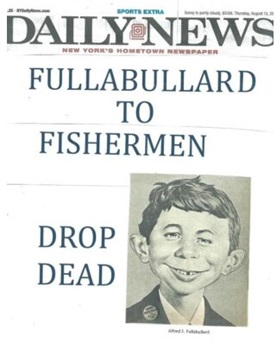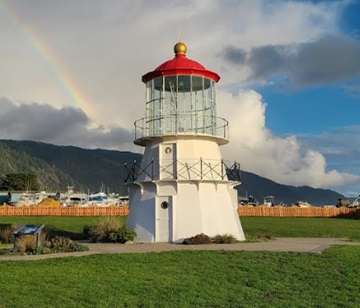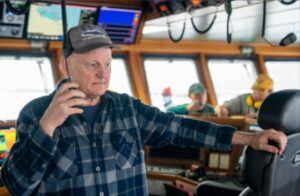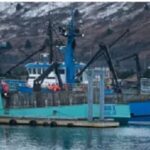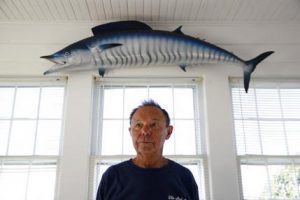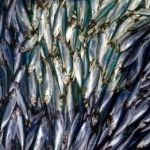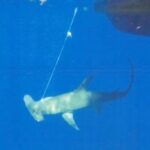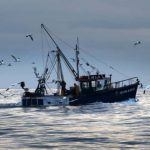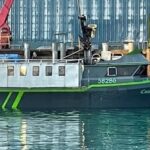Tag Archives: Jim Lovgren
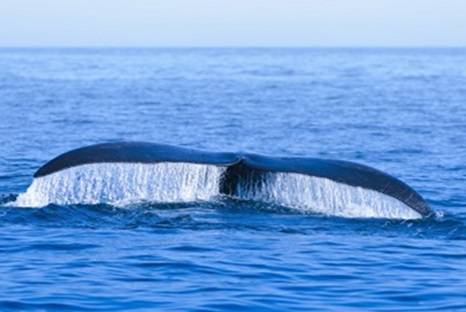
International Whaling Commission meets this week, will they discuss the US whale slaughter? By Jim Lovgren
The International Whaling Commission [IWC] meets this week from September 23 rd to the 27 th , in Lima Peru. The commission was established in 1946 and is a specialized regional fishery management organization created to provide for the proper conservation of various different Whale species, with the goal of supporting the orderly development of the Whaling industry. For two hundred years fishing vessels hunted down Whales bringing some species to the brink of extinction. Unlike the American slaughter of Buffalo, where they were killed solely for their hide, and the carcass left to rot, the Whaling industry utilized almost every part of these animals, with many indigenous populations being dependent on them as their main food source. This brings us to the present marine mammal slaughter being perpetrated by multi-national wind companies along the US east coast. In 2016 NOAA declared an unusual marine mammal mortality event was taking place with Humpback, Minke, and Northern Right Whales. Around that time research and construction was started on the Block Island wind project. more, >>CCLICK TO READ<< 16:11
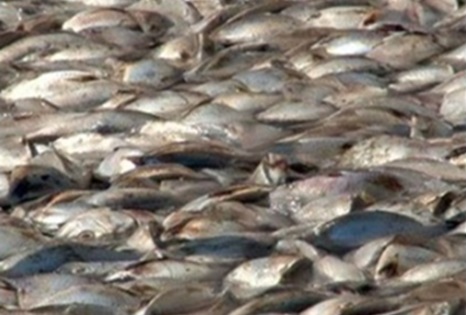
New Rutgers Study Confirms Hypoxic Event Last Summer off the New Jersey Coast by Jim Lovgren
In a scientific report released in December 2023 by Associate Professor Grace Saba, and Professor Josh Kohut using underwater robots, called “Gliders” to track ocean water quality, specifically, oxygen concentrations and PH levels, the researchers discovered that large areas of the New York Bight suffered a hypoxic event last summer. The study suggests that any of a number of factors could have caused these conditions, including a change in normal ocean stratification, increased input of nutrients which increase phytoplankton production, increased sea temperatures, and a few more. Conveniently missing from the possible causes of this hypoxic event is the impact of the offshore wind research vessels that have been extensively using high powered sonar and seismic devises throughout the New York bight area for over a year now. Also ignored was any outreach to the scallop fishermen along the coast who have been reporting unusual amounts of “clappers”, which are dead scallops, in their tows. In an article posted in the spring of 2023 in Fisherynation.com, “Is the Great Fishkill of 1976 About to be Repeated?“, I suggested that the New York bight could see an environmental catastrophe that could rival or surpass the great fish kill of 1976 and would be caused by the decomposing bodies of the dead sea creatures killed by the seismic and Sonar assault on the ocean bottom by offshore wind research vessels. Links, more, >>click to read<< 19:46
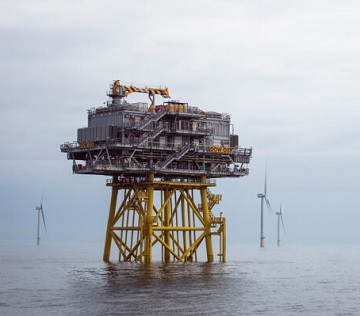
Letter: Informative wind energy resources out there, by Carol Frazier
I just watched a video on YouTube entitled “Bonnie Brady’s Crash Course in Offshore Wind and the Anti-Fishing Lobby”. I don’t recall any of our local news media (other than Mike Bradley of WGMD 92.7 fm) reporting on any of the information and facts contained therein. That said, I have also been made aware of a new fact regarding offshore wind of which people need to be aware. The wind turbines must be regularly “cooled” which is done by drawing ocean water into electrical substations using “once through” cooling systems – these systems are now prohibited in newer power plants because of the devastating effects on aquatic life. The first planned project off our coast calls for 121 turbines and up to four transfer stations. I would suggest everyone read the article “Offshore Wind Electrical Substations: The Secret, Silent Killers” by Jim Lovgren at Fisherynation.com. >click to read the letter< 08:38
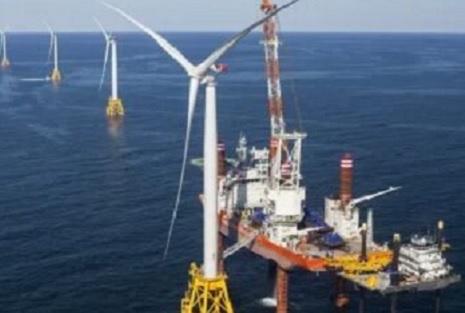
Oil Company con game exposed; the old switcheroo by Jim Lovgren
Oil companies developed techniques to not only locate oil and gas reserves thousands of feet below the ocean bottom, but to drill and recover them. Unfortunately, the tools used to locate oil reserves under the ocean floor, primarily seismic air gun arrays, have left a trail of dead sea creatures in its wake. Just like the US Navy, who for years denied the growing body of evidence linking military sonar usage to localized marine mammal strandings, the oil industry has denied any link of seismic research to the marine mammal strandings that invariably occur near their operations. Along comes Biden’s green new deal, and the east coast is now swamped with offshore research vessels using both sonar and seismic devises to map the sea floor and thousands of feet underneath it, for wind development. The same vessels in many cases that would have been involved with the 2012 proposed marine mammal massacre in search of oil reserves. These vessels are not only surveying the area in the lease site, but for many miles away from them, in many cases overlapping into other lease sites, or just mapping bottom that will never be available. Why? >click to read< 11:11
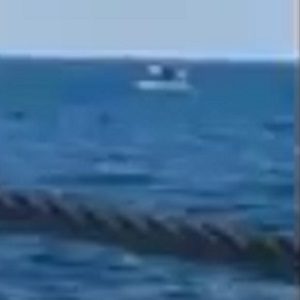
Distressed Whale spotted near offshore wind survey vessel – Jim Lovgren
Monday morning, March 20th, Bill Lovgren, the owner and Captain of the 72′ foot trawler, F/V Holdfast, left the Fisherman’s Dock Co-op shortly after 9 am for an offshore trip targeting Black Sea Bass and Summer Flounder with his two crewmen, James Lovgren, and Paul Kuchinski. Between them they have over seventy-five years of fishing experience from the port. This particular trip was unusual because the vessels fishing offshore generally leave port sometimes during the night due to having a 60- mile distance to travel to get to the grounds by daylight. Bill had to delay his departure Sunday night due to concerns of an oil leak in his generator. First thing Monday morning with the assurance from his mechanic that it wasn’t a critical problem, they threw off the lines and headed offshore. >click to read< 19:20

From Sandy Hook to Cape May, rising gas/diesel prices impact the marine industry
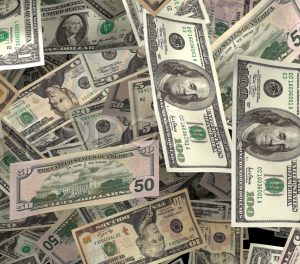
Looking Back: Nov.7, 1998 – “Conflict of interest, and fishery management”, By Nils Stolpe
This Looking Back features Nil’s insightful research into the funding source of fishery management bodies in the USA. This article was written in 1998, and the funding sources are still the same, although the monetary amounts are certainly different now. In light of the recent ASMFC /MAFMC allocation steal, covered in dec 20th posting on Fisherynation by Jim Lovgren, [who mistakenly stated that the management funding was by SK money, which is an import-based tax, it is actually Wallop-Breaux funding which is the tax on recreational gear and fuel]. This issue needs to see the light of day again, the conflict is clear, and now they’re using bad science against us. >click to read< 18:35
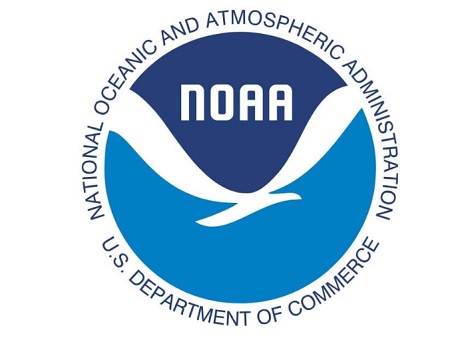
NOAA Fisheries Needs to Declare Fishery Disaster for Northeast Fisheries
NOAA Fisheries needs to declare a fishery disaster for the north Atlantic fisheries of the east coast due to complications caused by the Coronavirus pandemic. Due to government shutdowns of the primary market for US seafood, the restaurants, the fishing industry has been suffering not from a shortage of fish, but from a shortage of markets to sell them. 70% of the sea food consumed in the United States is sold in restaurants, the Corona pandemic has caused complete shutdowns of indoor dining in many states or reduced capacity seating in others. This has resulted in no demand for fresh local US caught fish, a very perishable product, and the resultant low prices that haven’t been seen in 50 years. By Jim Lovgren, >click to read< 07:38

#FishermensLivesMatter: Until this pandemic is over, say no to fishery observers being placed on fishing vessels
On July 1st the Trump Administration’s agency, NOAA will require that fishing vessels resume taking fishery observers on their fishing trips. Due to the Coronavirus pandemic these activities have been suspended for almost three months due to the danger of spreading the deadly disease among the
fishing industry and their families. Fishery observers are required by National Marine Fishery Service regulations to observe commercial fishing operations in almost all of our countries fisheries based on various criteria that include likelihood of interaction with marine mammals or other protected species, amount of bycatch in each fishery, adherence to regulations, and anything else they can justify to support this huge taxpayer money gobbling con game they have created. >click to read< by Jim Lovgren #FishermensLivesMatter 22:27

Looking Back: 2007-Wake up New Jersey before more of your tax dollars are wasted on Governor Corzine’s offshore windfarm
The Governor is proposing to create a huge 80 unit windfarm capable of producing 350 megawatts of electricity in the waters off the south Jersey shore at an estimated present cost of 1.5 billion dollars. Last week New York cancelled plans for a smaller farm, of about 40 windmills, off of Jones beach because of rising cost estimates already over 700 million dollars for a project originally projected to cost about 200 million. New York officials were smart enough to recognize a financial black hole before they started it. Are New Jersey officials? >click to read< 13:47

Tell Your Congressmen and Senators: Our US Fishing Industry Faces The Coronavirus Disaster
With the Coronavirus being spread around the world and nations reacting to this threat in many different ways, from doing nothing, to closing the borders and full quarantines, the unintended effects of such government actions have yet to be fully felt. Granted the stock market has lost 30% in value in just 3 weeks time, the average American really doesn’t feel that unless he is living on his investment returns. With the closing of schools, and restaurants and any places of public gatherings an enormous crisis is being created because many people are being put out of work and some of them may not have a business to come back to when the crisis is over. The Coronavirus may topple an empire if we let it. >click to read< 06:17
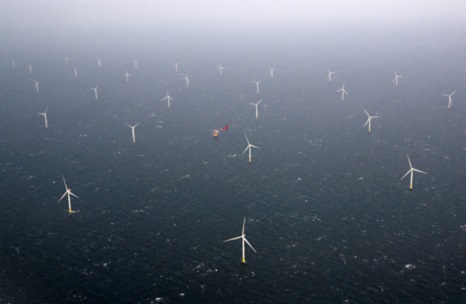
So! What’s the Big Rush to Offshore Wind?!! Part 1 and Part 2
The U.S. is currently in a mad rush to build offshore wind farms on every square inch of the ocean on the east coast, despite the fact that there is presently little known about the environmental effects of so many structures on the marine ecosystem. The surveying, construction, operation and maintenance of these huge, up to 900 foot tall structures, will create a cacophony of sound never before heard in these ocean waters.,, So, why must we ignore all semblances of concern to the possible effects of thousands of huge off shore wind turbines on the marine environment? By Commercial Fisherman Jim Lovgren. This is a two part series, >click to read< Part 1, >click to read< Part 2 23:04

CITES lists Mako shark under Appendix 2 trade restrictions, By Jim Lovgren
Commercial fisherman Jim Lovgren was at the CITES Convention held from the 17th to the 28th of August, 2019 in Geneva, Switzerland. He has written a comprehensive report about it, and he asked us to share it with you. There is a lot to review and is worthy reading,,, From Mako’s to Dogfish, and beyond,,, the influence of green money on the CITES party delegates and what has been happening in U.S. fishery management.,,This is exactly what is happening to U.S. fishermen, as small owner operator vessels are being squeezed out of fishery after fishery by the manipulations of “Greenwashed” corporate sponsored Enviro groups, out to save the planet. The U.S. government offers no help to the fishing industry because they are simple pawns to the energy companies that are running the show. Fishermen are just a nuisance, in the way of their offshore energy development plans. >click to read< 11:52
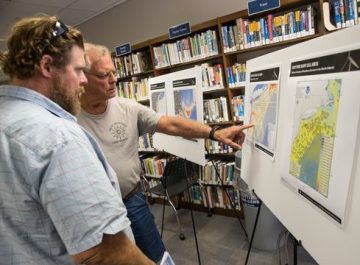
Offshore wind energy: fishermen ask for relief
Offshore windmills may be the future of energy here, but they’re presently a source of agitation to commercial fishermen. A vocal group of them, who aren’t necessarily opposed to windmills but just the placement of them on or near fishing grounds, which if you ask them is anywhere the water is salt, gave the Bureau of Ocean Energy Management their two cents at a public meeting Thursday. “All of these areas are prime scallop grounds. We’re not going to take any of this lying down,” said Arthur Osche, a member of the Point Pleasant Fishermen’s Dock Co-operative. Osche was referring to fishing grounds in Hudson North and Hudson South, two designated wind farm lease sites that start about 17 miles east of the coastline here. Fellow co-operative dock member Jim Lovgren said if their access to the grounds is restricted then they should be paid for the economic loss. “Mark off the area and then compensate us,” said Lovgren. >click to read<
Could N.J. defy summer flounder cuts?
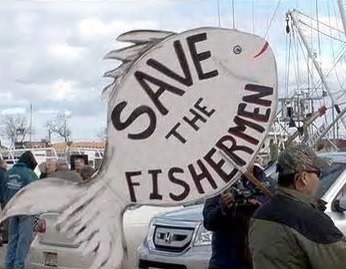 It didn’t take long after the Atlantic States Marine Fisheries Commission voted to slash summer flounder harvest quotas for the rumblings of anglers calling for New Jersey to defy the regulations to pick up. The ASMFC ordered the harvest cut by 40-percent based on science that indicates the fish is declining in abundance and survey data that reports anglers overreached their quotas last year. The science and angling surveys are at the center of the issue. Many lawmakers in New Jersey and its environmental chief have expressed concern about its accuracy because it relies on random sampling. “We understand the long-term impacts of overfishing a species. But we also know for a fact that fluke are abundant and the population is stable off New Jersey,” said Bob Martin, the Commissioner of the state’s Department of Environmental Protection. Video, Read the story here 16:25
It didn’t take long after the Atlantic States Marine Fisheries Commission voted to slash summer flounder harvest quotas for the rumblings of anglers calling for New Jersey to defy the regulations to pick up. The ASMFC ordered the harvest cut by 40-percent based on science that indicates the fish is declining in abundance and survey data that reports anglers overreached their quotas last year. The science and angling surveys are at the center of the issue. Many lawmakers in New Jersey and its environmental chief have expressed concern about its accuracy because it relies on random sampling. “We understand the long-term impacts of overfishing a species. But we also know for a fact that fluke are abundant and the population is stable off New Jersey,” said Bob Martin, the Commissioner of the state’s Department of Environmental Protection. Video, Read the story here 16:25
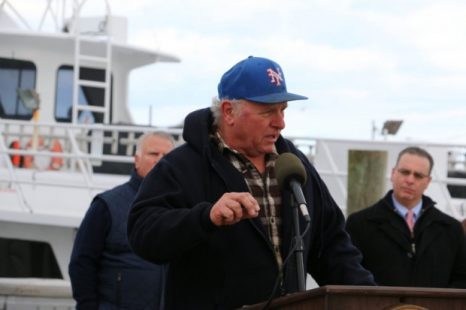
N.J. fishermen, officials demand feds back off of proposed flounder limits
In a unified show of support, New Jersey officials and leaders of the state’s fishing industry said Friday they are demanding the federal government abandon plans to cut the amount of fluke to be harvested this year. Insisting the proposed new limits will devastate an industry important to New Jersey’s economy, the government and industry representatives said they’re prepared to mount a legal fight, if necessary, to fight “ridiculous” limits that were based on “flawed” data. Jim Lovgren, a fishing boat captain and director of the Fishermen’s Dock Cooperative, said fishermen already experienced a 30-percent reduction in limits last year and face yet another 17- or 18-percent cut next year. The Point Pleasant Beach cooperative he heads pulls in about 2 million pounds of flounder annually. “Taking 30 percent of that last year hurt. It hurt me economically. It hurt everybody over there. It hurt everybody here,” he said to the crowd. Photo gallery of 21 images, Read the story here 16:54
“Delusions of a Mad Man”. The story of Harvey Haddock, a fisherman who finally had enough and decided to do something about it
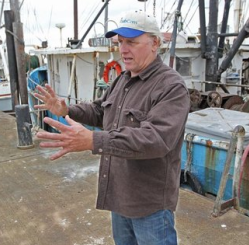 READ THIS! “Delusions of a Mad Man”. Excerpted from a novel in progress by Jim Lovgren. Harvey Haddock cursed his father, why did he have to be a commercial fisherman? He could have been anything, a doctor, lawyer, porno star, anything but a damn commercial fisherman. He knew it was wrong to curse his father, but his rage needed an outlet and since his problems started with his career choice, his anger naturally returned to its birthplace. His father was a fisherman, and so was his grandfather, brother, and uncles, it seemed like everybody in his family at some time was a fisherman, probably going all the way back to Sweden where his ancestors had originated. The difference was that in other countries, and even in America until a few years ago, Commercial fisherman were respected as the hard working food providers that they were, but somehow something went wrong in America. Read the story here 16:05
READ THIS! “Delusions of a Mad Man”. Excerpted from a novel in progress by Jim Lovgren. Harvey Haddock cursed his father, why did he have to be a commercial fisherman? He could have been anything, a doctor, lawyer, porno star, anything but a damn commercial fisherman. He knew it was wrong to curse his father, but his rage needed an outlet and since his problems started with his career choice, his anger naturally returned to its birthplace. His father was a fisherman, and so was his grandfather, brother, and uncles, it seemed like everybody in his family at some time was a fisherman, probably going all the way back to Sweden where his ancestors had originated. The difference was that in other countries, and even in America until a few years ago, Commercial fisherman were respected as the hard working food providers that they were, but somehow something went wrong in America. Read the story here 16:05






